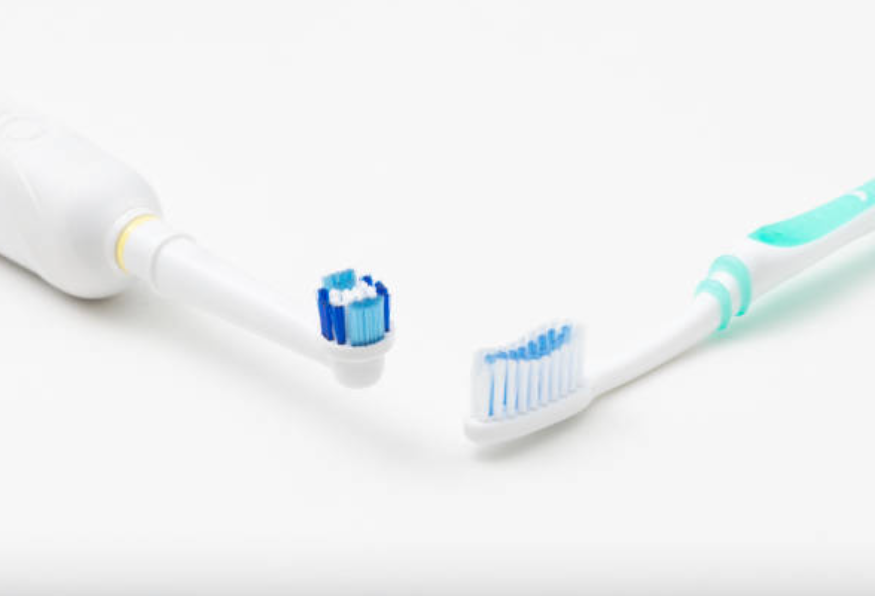Electric toothbrushes have gained popularity over the years due to their ease of use and effectiveness in promoting oral hygiene. However, as with any product, there are both pros and cons to using an electric toothbrush.
Pros 1: More Effective Cleaning
Electric toothbrushes are becoming increasingly popular among people who want to maintain good oral hygiene. There are several reasons why electric toothbrushes are considered more effective than manual toothbrushes for cleaning teeth. In this article, we’ll explore these reasons in depth.
Better Plaque Removal
One of the main benefits of electric toothbrushes is their ability to remove more plaque from teeth than manual toothbrushes. The bristles of electric toothbrushes move in a back-and-forth motion or a circular motion, depending on the type of toothbrush. This motion helps to loosen and remove plaque from teeth and gums more effectively than the simple up-and-down motion of a manual toothbrush.
Additionally, many electric toothbrushes have built-in timers that ensure you brush for the recommended two minutes, which can further help remove plaque and prevent the buildup of tartar.
More Consistent Brushing
Another advantage of electric toothbrushes is that they provide more consistent brushing than manual toothbrushes. With a manual toothbrush, it’s easy to miss areas of your mouth or brush too hard or too gently in certain spots. Electric toothbrushes, on the other hand, use a consistent motion and pressure, which helps ensure that all areas of your mouth are getting the same amount of attention.
Easy to Use
Electric toothbrushes are generally easier to use than manual toothbrushes. You don’t have to worry about how much pressure to apply or what angle to hold the toothbrush at, as the toothbrush will do the work for you. This can be especially beneficial for people with limited dexterity or mobility, such as the elderly or those with disabilities.
Different Brushing Modes
Many electric toothbrushes offer different brushing modes, such as deep cleaning or sensitive brushing, which can be customized to your specific needs. This can be especially helpful if you have sensitive teeth or gums, as you can adjust the intensity of the brushing to avoid discomfort.
Fun and Engaging
Finally, electric toothbrushes can be more fun and engaging to use than manual toothbrushes. Many models come with fun features such as timers, games, or music, which can make brushing more enjoyable for children and adults alike. This can help encourage people to brush for the recommended two minutes twice a day, which can have a significant impact on their oral health.
Pros2: Easy to Use
Electric toothbrushes are generally easier to use than manual toothbrushes for several reasons. First, they don’t require as much physical effort as manual toothbrushes, making them a great option for people with limited dexterity or mobility, such as the elderly or those with disabilities. The electric motor powers the toothbrush, so all you need to do is guide it around your mouth.
Second, electric toothbrushes often have features that make them easier to use, such as timers and pressure sensors. Many models come with built-in timers that ensure you brush for the recommended two minutes, which can be especially helpful for children who may have trouble keeping track of time. Additionally, some electric toothbrushes have pressure sensors that alert you if you’re brushing too hard, which can help prevent damage to your teeth and gums.
Third, electric toothbrushes can help improve your brushing technique. Many models have multiple brushing modes, such as deep cleaning or sensitive brushing, which can be customized to your specific needs. This can help you avoid brushing too hard or too gently in certain spots, which can be a problem with manual toothbrushes.
Fourth, electric toothbrushes are generally easier to clean than manual toothbrushes. Many models come with removable brush heads that can be replaced every few months, which helps ensure that you’re always using a clean, hygienic brush. Additionally, some models have UV sanitizers that kill bacteria and germs on the brush head, further improving oral hygiene.
Finally, electric toothbrushes can be more fun and engaging to use than manual toothbrushes, which can make brushing feel less like a chore. Many models come with features such as timers, games, or music, which can make brushing more enjoyable for children and adults alike.
Pros 3: Built-in Timers
Improved Brushing Habits: Electric toothbrushes with timers help users develop good brushing habits. These timers help individuals brush their teeth for the recommended two minutes, ensuring that they cover all areas of their mouth and teeth.
Consistent Brushing Time: The built-in timers ensure that the brushing time is consistent, which is essential for maintaining good oral hygiene. With consistent brushing time, individuals can avoid missing spots and ensure that they remove all plaque and bacteria.
Prevent Over-brushing: Over-brushing can be harmful to teeth and gums. Electric toothbrushes with timers prevent over-brushing by stopping automatically after the recommended two-minute time frame. This ensures that individuals do not damage their teeth and gums by brushing too hard or too long.
Save Time: Using an electric toothbrush with a built-in timer can save time in the morning rush. The timer ensures that users brush their teeth for the recommended two minutes, eliminating the need for individuals to time themselves.
Battery Life: Built-in timers in electric toothbrushes also help to extend battery life by automatically turning off the toothbrush after the recommended brushing time. This can help save battery power and ensure that the toothbrush lasts longer before needing a recharge or battery replacement.
Pros 4: Multiple Brushing Modes
Customizable Experience: Multiple brushing modes allow users to customize their brushing experience. They can choose a mode that suits their specific dental needs, such as sensitive teeth, gum care, or deep cleaning.
Improved Oral Health: Different brushing modes offer different benefits that can help improve oral health. For instance, a mode designed for deep cleaning can remove more plaque and bacteria, while a sensitive mode can help prevent damage to teeth and gums.
Versatility: Electric toothbrushes with multiple brushing modes are versatile and can be used by people with different dental needs. For instance, a family can share an electric toothbrush with multiple modes that cater to their specific needs, such as children or adults with sensitive teeth.
Enhanced Cleaning: Electric toothbrushes with multiple modes can clean teeth more effectively than traditional toothbrushes. For instance, some modes offer pulsing action that can remove more plaque and bacteria, while others can provide a more gentle cleaning for sensitive teeth.
Long-term Savings: While electric toothbrushes with multiple modes may be more expensive upfront, they can provide long-term savings by reducing the need for frequent dental visits. By using a toothbrush with multiple modes that offer different benefits, individuals can maintain their oral health more effectively and avoid costly dental procedures.
Cons: 1 Cost
Advanced Technology: Electric toothbrushes often feature advanced technology, such as timers, pressure sensors, and multiple brushing modes. These features make brushing more effective and efficient, but also increase the cost of manufacturing the toothbrush.
Rechargeable Batteries: Many electric toothbrushes are powered by rechargeable batteries, which add to the cost of the toothbrush. These batteries need to be high-quality to ensure they last a long time and provide consistent power.
Specialized Parts: Electric toothbrushes often require specialized parts, such as the brush head and motor, that are not used in traditional toothbrushes. These parts are designed to work together to provide an effective cleaning experience, but they also add to the cost of the toothbrush.
Branding: Like with many other products, some electric toothbrushes are marketed as premium or luxury items, which can drive up the cost. These brands may invest in advertising, packaging, and design to differentiate their product from competitors and justify a higher price point.
Cons 2: Battery Life
Limited lifespan: The battery in an electric toothbrush has a limited lifespan and will eventually need to be replaced. This can be a costly and time-consuming process.
Charging time: Depending on the model, an electric toothbrush can take several hours to fully charge, which may be inconvenient for those who lead busy lives.
Inconvenient charging: Unlike a manual toothbrush, which can be used immediately after picking it up, an electric toothbrush requires charging before use. If you forget to charge it, you will not be able to use it until it has been fully charged.
Lack of portability: Electric toothbrushes are not as portable as manual toothbrushes because they require a power source. This means that if you want to take your electric toothbrush with you on a trip, you will need to bring the charger and find a power source to charge it.
Environmental impact: Batteries have a negative impact on the environment, especially when they are not disposed of properly. When the battery in an electric toothbrush reaches the end of its life, it must be disposed of responsibly to avoid contributing to environmental pollution.
Cons 3: Noise
Electric toothbrushes tend to produce more noise than manual toothbrushes for several reasons:
Motor noise: Electric toothbrushes are powered by a motor, which can produce a significant amount of noise as it rotates. The noise level can vary depending on the quality of the motor and the design of the toothbrush.
Vibration noise: Electric toothbrushes vibrate at high speeds to effectively clean teeth, which can also contribute to the noise level. The vibration can cause the bristles to hit against the teeth and create additional noise.
Gearing noise: Some electric toothbrushes use gears to convert the motor’s rotational motion into the back-and-forth motion of the brush head. The gear system can produce additional noise as the teeth mesh and turn.
Design factors: The shape and design of the toothbrush can also contribute to the noise level. For example, a toothbrush with a larger brush head may generate more noise than a smaller one due to the increased air displacement.
Cons 4: Bulky Design
Motor and battery: Electric toothbrushes require a motor and a battery to function, which adds bulk to the overall design. The size of the motor and battery can vary depending on the model and the features included.
Brush head: Electric toothbrushes typically have larger brush heads than manual toothbrushes to accommodate the motor and provide enough surface area to clean teeth effectively. This can also contribute to the bulkier design.
Ergonomics: Many electric toothbrushes are designed to be ergonomically shaped to fit comfortably in the hand and provide a secure grip during use. This can result in a bulkier handle compared to a manual toothbrush.
Additional features: Some electric toothbrushes come with additional features such as timers, pressure sensors, and different cleaning modes. These features require additional components, which can contribute to the bulkier design.
Post time: May-04-2023








